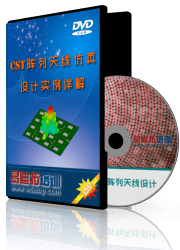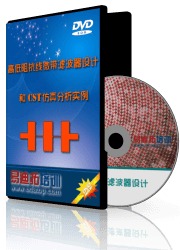- 易迪拓培训,专注于微波、射频、天线设计工程师的培养
CST2013: Mechanical Solver Specials
 Simulation: Solver
Simulation: Solver Start Simulation
Start Simulation Specials
Specials
This dialog box offers the possibility to define special settings for the structural mechanics solver.
Solver type
Drop down list to specify the solver type used to solve linear systems of equations. Available options are
Auto: The solver type is automatically set depending on the problem size (recommended)
Iterative: An iterative solver is used.
Direct: A direct solver is used.
Regularization
Here the extent, to which the regularization of the solution has to be performed, can be selected. Regularization means the stabilization of the solution in the case, if not all of the degrees of freedom are fixed by displacement boundary conditions. In other words, if many different solutions fit the current formulation of the problem (a body is allowed to freely rotate or slide in some directions), the solution with the minimal possible energy is chosen (neither rotation nor sliding occurs).
The following options are proposed:
None: No regularization is performed.
Auto: The solver determines which components of displacement boundary conditions are defined. Regularization is applied to the rest of the components of solution. This option is recommended.
Full: Regularization is applied for all of the components of solution.
Solver order
This option allows to specify whether the structural mechanics solver uses first-, second- or third-order accuracy. Second-order is the default due to its good compromise between accuracy and memory efficiency. However, if the structure is geometrically complex and therefore comes along with huge memory requirements, first-order is an alternative. On the other hand, third-order accuracy delivers a better solution for coarsely discretized problems.
Curvature...
This button opens the Special Mesh Properties dialog, where the curved element order can be specified.
Consider large deformations
Check this checkbox if the solution is expected to contain large deformations. In this case the nonlinear solver is started. This solver utilizes the Neo-Hookean compressible material model. For more information on the nonlinear solver, please refer to Nonlinear Mechanical Solver Overview. The maximal accuracy as well as the maximal number of iterations for the nonlinear solver can be set in the corresponding fields.
Reference temperature
Define here the original temperature of the solution domain. If an external temperature distribution is imported, the difference between this distribution and the reference temperature is considered by the solver for displacement computation.
Gravitational acceleration
Here, the X, Y and Z components of gravitational acceleration acting within the solution domain can be set. These values define the gravitational volume forces for objects with non-zero density.
For each non-zero component of gravitational acceleration, the corresponding component of at least one displacement boundary condition should be defined. Otherwise, the system would "glide" in the corresponding direction with a constant acceleration, which cannot be described by any static solution.
Ok
Accepts the changes and closes the dialog.
Cancel
Closes this dialog box without performing any further action.
Help
Shows this help text.
See also
Mechanical Solver Parameters, Regularization Overview, Nonlinear Mechanical Solver Overview
CST微波工作室培训课程套装,专家讲解,视频教学,帮助您快速学习掌握CST设计应用
上一篇:CST2013: Multilayer Solver Parameters
下一篇:CST2013: Potential Set Definitions
CST中文视频培训教程 | More...
 最全面、最专业的CST微波工作室视频培训课程,可以帮助您从零开始,全面系统学习CST的设计应用【More..】
最全面、最专业的CST微波工作室视频培训课程,可以帮助您从零开始,全面系统学习CST的设计应用【More..】
频道总排行
- CST2013: Mesh Problem Handling
- CST2013: Field Source Overview
- CST2013: Discrete Port Overview
- CST2013: Sources and Boundary C
- CST2013: Multipin Port Overview
- CST2013: Farfield Overview
- CST2013: Waveguide Port
- CST2013: Frequency Domain Solver
- CST2013: Import ODB++ Files
- CST2013: Settings for Floquet B











 沪公网安备 31011202014168号
沪公网安备 31011202014168号
 1427313829
1427313829 旺旺在线
旺旺在线 Skype Online
Skype Online 13761612886
13761612886 官方淘宝店
官方淘宝店
